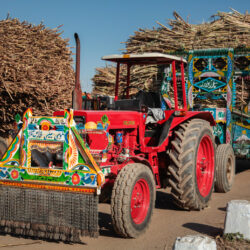Introduction to Tanzania’s Safari Seasons
Tanzania is one of Africa’s most rewarding safari destinations, offering world-famous wildlife reserves such as Serengeti, Ngorongoro Crater, Tarangire, and Lake Manyara. Understanding the best time to visit Tanzania for safari is essential to witness the country’s remarkable wildlife moments — from the Great Migration to predator hunts on the plains. Each season presents something different, shaped by rainfall patterns, temperatures, and animal movements.
This guide breaks down Tanzania’s safari calendar month by month, helping you plan an unforgettable journey based on your interests, whether it’s watching wildebeest crossings, birdwatching, or enjoying quieter parks with lush greenery.
January to March – Calving Season in the Serengeti
From January to March, southern Serengeti transforms into a vast nursery as hundreds of thousands of wildebeest give birth. This period is often called the calving season, one of the most dramatic times in Tanzania’s wildlife calendar.
During these months, the plains are lush from short rains, attracting large herds of grazers and numerous predators like lions, cheetahs, and hyenas. It’s an exceptional time for photographers who want to capture tender newborn scenes and thrilling predator-prey encounters.
The best time to visit Tanzania for safari for travelers who love action-packed game drives and want to see wildlife abundance up close is this early part of the year. However, occasional showers are expected, so it’s important to pack light waterproof gear.
April to May – The Green and Quiet Months
April and May mark the long rainy season across Tanzania. While heavy rainfall can make some roads muddy and certain camps close, this period offers unique advantages for those seeking solitude and lush landscapes.
The parks are at their greenest, dust-free, and filled with migratory birds. Many lodges offer special rates, and the atmosphere is peaceful, far from the peak-season crowds.
If you’re an avid photographer, this is still one of the best times to visit Tanzania for safari because the skies are dramatic, wildlife is healthy after the rains, and the scenery is breathtakingly vibrant. However, accessibility can be limited in remote areas, so it’s better to focus on regions like the Ngorongoro Crater and central Serengeti where roads are more reliable.
June to October – The Classic Dry Season Safari
For many, June to October represents the best time to visit Tanzania for safari. These are the dry months when vegetation thins out, making wildlife sightings easier. Herds gather near waterholes, and big cats patrol the open plains.
During June and July, the wildebeest migration moves north through the Serengeti, offering iconic scenes of vast herds crossing crocodile-infested rivers. This spectacle draws photographers and wildlife lovers from around the world.
August to October continues to deliver excellent sightings across the Serengeti and northern parks. The weather is warm, skies are clear, and mosquitoes are minimal. These conditions make it the most comfortable and rewarding period for safari adventures.
If you plan to visit during these months, it’s wise to book accommodations well in advance since lodges and camps fill up quickly due to high demand.
November to December – Short Rains and Rejuvenation
After the long dry spell, November and December bring short rains that refresh the landscape. The first green shoots appear, and migratory birds return in colorful flocks. This period marks the start of the breeding season for many species.
Though showers occur mostly in the afternoon, they rarely disrupt safari activities. The parks are less crowded, and game viewing remains strong, especially in the Serengeti and Ngorongoro Crater.
For travelers looking for balance between good wildlife viewing, fewer tourists, and moderate prices, this is another best time to visit Tanzania for safari. The environment feels alive again, and photographers can capture striking contrasts between sun, rain, and the vibrant African plains.
The Great Wildebeest Migration – Timing It Right
One of the main reasons travelers research the best time to visit Tanzania for safari is to witness the Great Wildebeest Migration — a natural event involving over two million wildebeest, zebra, and gazelle moving through the Serengeti ecosystem.
Here’s a simple breakdown of where and when to see it:
-
January to March: Calving in the southern Serengeti (Ndutu area).
-
April to May: Herds move north through central Serengeti.
-
June to July: Crossing the Grumeti River.
-
August to October: Dramatic Mara River crossings in northern Serengeti.
-
November to December: Return south as rains begin.
Each stage of the migration offers something different — from nurturing calves to thrilling predator chases — making any time during this cycle a worthwhile safari opportunity.
Coastal Weather and Safari Combinations
Many travelers combine a safari with a beach holiday on Zanzibar or the Tanzanian coast. For this, it’s important to align both experiences with favorable weather.
The coastal region enjoys warm temperatures year-round but experiences long rains between April and May, and short rains in November. The driest and most pleasant months for swimming, diving, and relaxation are June to October and January to February.
If you’re planning both safari and beach time, June to October remains the best time to visit Tanzania for safari as well as for enjoying Zanzibar’s pristine beaches afterward.
Birdwatching and Nature Lovers’ Months
Bird enthusiasts will find November to April particularly rewarding. Migratory species arrive from Europe and Asia, filling the skies with color and sound. The wetlands of Lake Manyara, Tarangire, and Selous (now Nyerere National Park) are at their best during this period.
Although some areas receive rain, it’s the prime time to witness breeding plumage, courtship displays, and large flocks of flamingos. For photographers or travelers seeking quieter safaris with diverse wildlife activity, this can also be considered the best time to visit Tanzania for safari.
Temperature and Climate Overview
Tanzania’s climate varies slightly by region and altitude. The coastal and lowland areas are warm and humid, while the highlands, such as Ngorongoro, experience cooler temperatures, especially at night.
-
Dry season (June–October): Warm days, cool nights, and minimal rainfall.
-
Short rains (November–December): Quick showers, green landscapes, pleasant weather.
-
Wet season (March–May): Heavy rains in some areas, lush vegetation, fewer tourists.
Understanding these climate patterns helps you plan safaris that align with your comfort and travel goals.
Choosing the Best Time Based on Your Interests
-
For wildlife and migration: June to October.
-
For calving and predator activity: January to March.
-
For lush scenery and solitude: April to May.
-
For birdwatching: November to April.
-
For photography and clear skies: June to September.
Ultimately, the best time to visit Tanzania for safari depends on what you wish to see and experience. Tanzania offers rewarding encounters throughout the year; you just need to match your interests to the right season.
Final Thoughts
Tanzania’s wildlife rhythm never stops; it only changes its tune. Whether it’s the raw intensity of the dry season, the freshness of the green months, or the magic of the migration, every moment in Tanzania feels alive with natural wonder.
When deciding the best time to visit Tanzania for safari, think about your priorities — do you want action, quiet landscapes, or a blend of both? Whatever your choice, Tanzania welcomes you with open horizons, timeless wildlife moments, and the essence of wild Africa that stays with you long after you leave.



